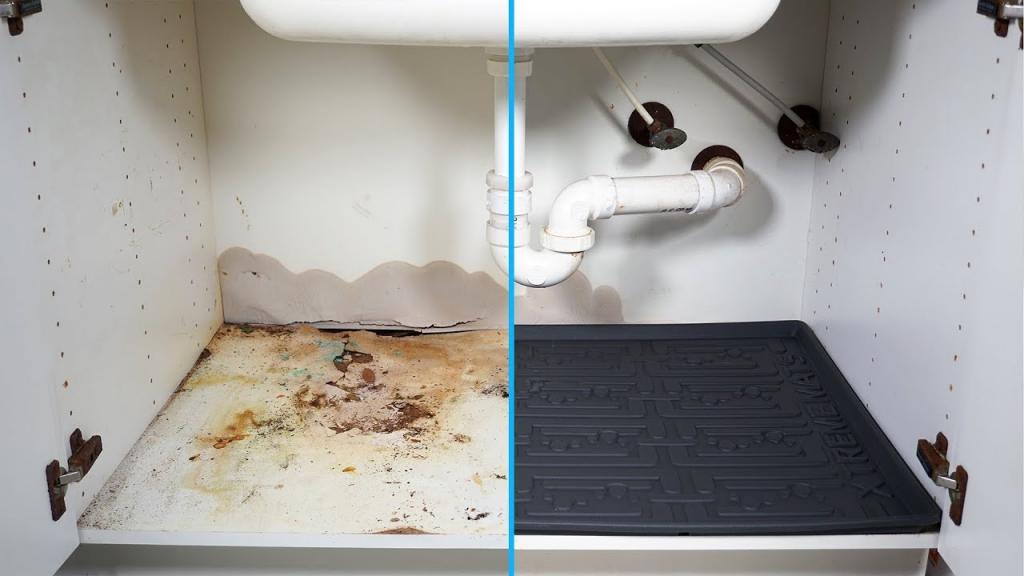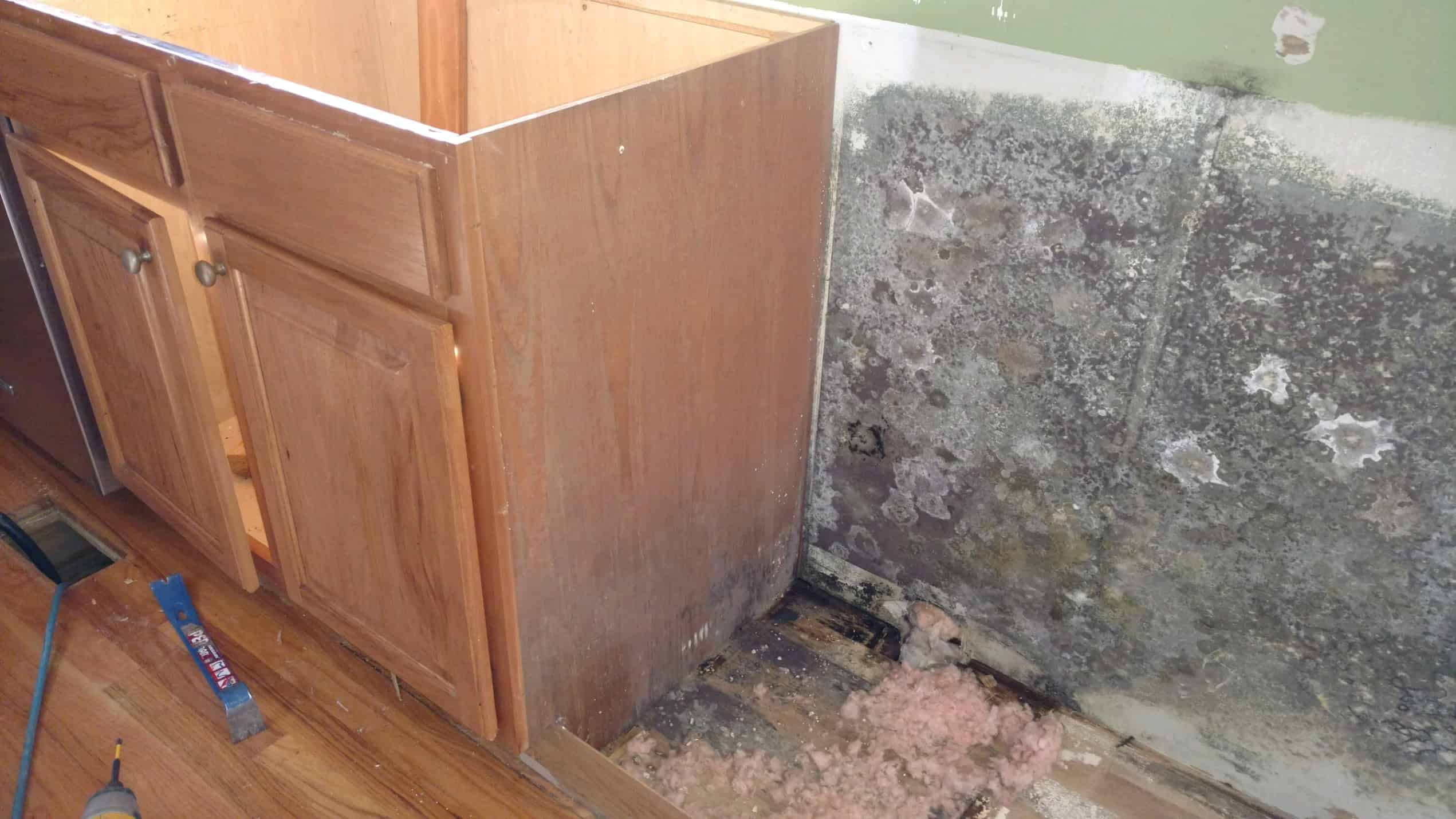Assessing the Damage: How To Repair Kitchen Cabinets With Water Damage

Before you start fixing your kitchen cabinets, you need to figure out how bad the damage is. It’s like when you’re trying to fix your friend’s car – you gotta know if it’s just a flat tire or a whole engine overhaul!
Levels of Water Damage, How to repair kitchen cabinets with water damage
Understanding the extent of water damage is crucial for determining the repair approach. There are different levels of water damage, each requiring a specific repair strategy.
- Minor Surface Damage: This is like a small scratch on your car. It’s just the surface that’s affected, and you can probably fix it with a little sanding and paint.
- Moderate Damage: This is like a dent in your car. The damage goes deeper than just the surface, but it’s still manageable. You might need to replace some of the wood or use wood filler to fix it.
- Severe Structural Compromise: This is like a major accident that’s totaled your car. The damage is so bad that it affects the entire structure of the cabinet. You might need to replace the entire cabinet or even part of the wall.
Identifying the Extent of Damage
To determine the extent of damage, you can look for visual cues. For example, if the cabinet door is warped or swollen, that’s a sign of moderate damage. If the cabinet is starting to rot or mold, that’s a sign of severe damage.
Potential Causes of Water Damage
Water damage to kitchen cabinets can happen for a variety of reasons.
- Leaks: A leaky faucet, pipe, or appliance can cause water damage to cabinets.
- Spills: A careless spill can quickly lead to water damage, especially if it’s not cleaned up immediately.
- Humidity: High humidity can cause condensation to form on cabinets, leading to water damage.
Preparing for Repair

Before you start fixing those water-damaged cabinets, it’s crucial to get yourself ready. Think of it as prepping for a big battle, but instead of swords and shields, you’ll be wielding screwdrivers and sandpaper.
Safety Precautions
Water-damaged wood can harbor hidden dangers, like mold and mildew, so it’s important to protect yourself. You wouldn’t go into a boxing ring without gloves, right? Same goes for fixing cabinets. Here’s what you need:
- Wear a dust mask to prevent inhaling any spores or particles.
- Use safety glasses to protect your eyes from flying debris.
- Wear gloves to protect your hands from splinters and mold.
- Ensure good ventilation by opening windows or using a fan. This will help remove any lingering moisture and prevent mold growth.
Tools and Materials
You’ll need the right tools to tackle this repair job. It’s like having a well-stocked toolbox for any handyman. Here’s what you’ll need:
- Screwdriver: For removing and reattaching cabinet doors and hardware.
- Hammer: For removing nails and securing wood.
- Pliers: For gripping and pulling out stubborn nails.
- Wood filler: For filling in cracks and holes.
- Sandpaper: For smoothing out rough surfaces and preparing for paint.
- Paint: For covering up any damage and restoring the cabinets to their original color.
- Paintbrush: For applying paint evenly and smoothly.
- Cleaning supplies: Including a sponge, cleaning solution, and a bucket for cleaning the cabinets.
- Protective gear: Including gloves, safety glasses, and a dust mask.
Cleaning and Drying
Before you start repairing, you need to clean and dry the cabinets thoroughly. Imagine you’re giving them a good spa treatment to get rid of all the dirt and grime. Here’s how to do it:
- Remove all cabinet doors and hardware to allow for proper cleaning and drying.
- Use a mild cleaning solution and a sponge to scrub the cabinets. This will remove any dirt, grease, or mold.
- Rinse the cabinets thoroughly with clean water.
- Dry the cabinets completely with a towel or allow them to air dry. You can also use a hairdryer to speed up the drying process.
Removing Mold and Mildew
Mold and mildew can be a real nuisance, but don’t worry, you can get rid of them. Think of it as a cleaning battle, and you’re the champion. Here’s how to do it:
- Use a solution of bleach and water to kill mold and mildew. Remember to wear gloves and a mask while working with bleach.
- Scrub the affected areas thoroughly with a stiff brush. Make sure to get into all the nooks and crannies.
- Rinse the cabinets thoroughly with clean water.
- Allow the cabinets to dry completely before proceeding with any repairs.
Repairing the Damage

Now that you’ve assessed the damage and prepped your cabinets, it’s time to get down to business and fix those water-damaged areas. Just like dealing with a stubborn stain on your favorite shirt, fixing water damage in your cabinets requires a bit of patience and a sprinkle of DIY magic. But don’t worry, we’ll guide you through the process step-by-step.
Surface Scratches
Surface scratches, like the ones left by a rogue spatula, can be easily fixed. These are the easiest to handle, just like dealing with a minor hiccup in your day.
- Clean the Area: Before you start any repairs, it’s important to clean the area thoroughly. This is like clearing your workspace before tackling a project, you need a clean slate. Use a damp cloth to wipe away any dirt or grime.
- Sand the Scratch: Use fine-grit sandpaper to gently sand the scratch. This is like smoothing out a rough patch on a road, making it nice and even.
- Apply Wood Filler: Use a wood filler that matches the color of your cabinets to fill in the scratch. Think of this as filling in a pothole, making the surface smooth again.
- Sand and Finish: Once the filler is dry, sand it down smooth with fine-grit sandpaper. Then, apply a coat of paint or stain to match the rest of your cabinets.
Warping
Warping, like a slightly bent spoon, is a bit trickier, but with a bit of elbow grease, you can straighten it out.
- Assess the Severity: If the warping is minor, you can try to fix it by applying moisture to the warped area. This is like giving a dry plant a good drink, allowing it to regain its shape.
- Apply Moisture: Use a damp cloth or sponge to apply moisture to the warped area. You can also use a steamer, but be careful not to saturate the wood. Remember, too much water can be just as bad as not enough.
- Clamp and Dry: Clamp the warped area to a flat surface to help it straighten out as it dries. This is like putting a stubborn piece of fabric under a heavy weight to flatten it out.
- Repeat if Necessary: You may need to repeat this process several times to achieve the desired results. Patience is key, just like waiting for your favorite dish to cook properly.
Structural Damage
Structural damage, like a broken leg on a chair, requires more serious attention. It’s like dealing with a major problem, requiring a more robust solution.
- Assess the Damage: If the damage is too severe, you may need to replace the damaged section of the cabinet. This is like replacing a broken part of a machine, ensuring it functions properly.
- Cut and Fit: Cut a new piece of wood to fit the damaged area. This is like tailoring a new piece of fabric to fit a garment, ensuring a perfect fit.
- Secure the New Piece: Attach the new piece of wood to the cabinet using wood glue and screws. This is like stitching a patch onto a torn garment, making it whole again.
- Finish: Sand the repaired area smooth and apply a coat of paint or stain to match the rest of the cabinet. This is like adding the finishing touches to a project, ensuring a seamless result.
Replacing Damaged Cabinet Components
Sometimes, the damage is so extensive that you need to replace the entire cabinet component. This is like replacing a worn-out shoe with a new one, giving you a fresh start.
- Remove the Damaged Component: Carefully remove the damaged door, drawer front, or shelf. This is like taking off a damaged piece of clothing, preparing for a replacement.
- Measure and Order: Measure the dimensions of the damaged component and order a replacement. This is like taking your measurements for a new suit, ensuring a perfect fit.
- Install the New Component: Install the new component, making sure it is properly aligned and secured. This is like putting on a new piece of clothing, giving you a fresh look.
How to repair kitchen cabinets with water damage – Water damage can wreak havoc on kitchen cabinets, but with a little elbow grease and the right tools, you can bring them back to life. Once the damage is repaired, you might want to consider maximizing your kitchen space by closing space above kitchen cabinets.
This will not only add storage space but also give your kitchen a more finished look. After all, a well-organized kitchen is a happy kitchen, and a happy kitchen means happy cooking!
Water damage can be a real bummer for your kitchen cabinets, but don’t despair! You can often fix the problem with some wood filler and a fresh coat of paint. If the damage is too extensive, you might consider replacing the doors entirely, and what better way to upgrade than with custom high gloss cabinet doors ?
They’ll give your kitchen a sleek, modern look and make it feel brand new. Of course, if you’re handy, you can also try refinishing the existing doors to match the new look.
